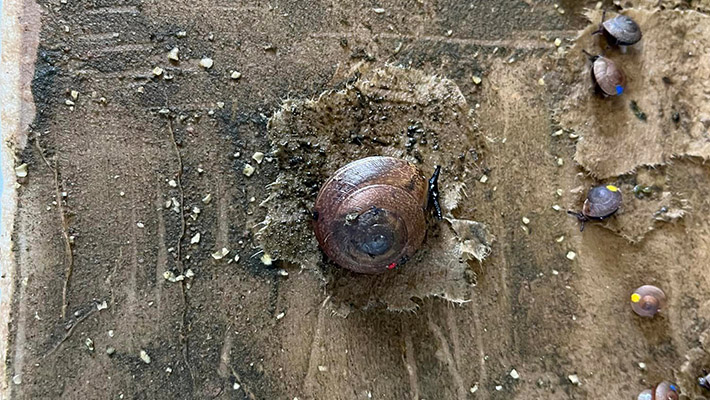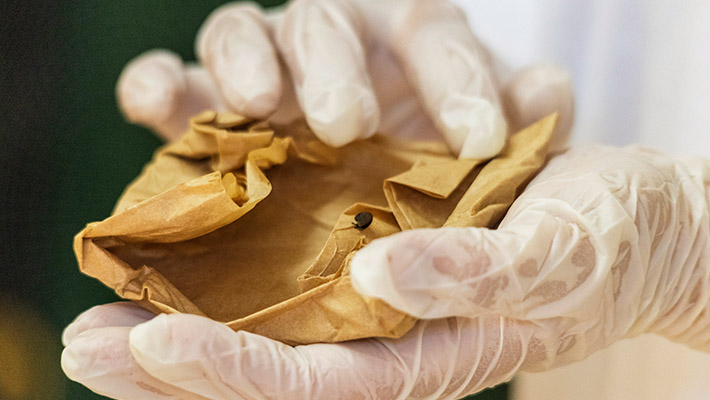Conserving endangered snail species from Australia's offshore islands
In May 2021, Taronga alongside partners, collected founders of Advena campbellii (presumed extinct until rediscovery in 2020) and Advena suteri (known only from a single location), two of approximately 60 species of land snails endemic to the island.
Both species give live birth - yes, fully formed baby snails complete with shells, and even more excitingly, from their necks!
Invertebrates are severely under-represented in conservation management, with these two species threatened by predation by introduced rats and chickens, as well as habitat loss and climate change.


This research is helping us understand the biology and conservation status of Norfolk Island’s land snails and will therefore allow us to better protect one of Australia’s major land snail biodiversity hotspots. Over the last year, the Norfolk Island Snail conservation program continued to contribute new information on these elusive invertebrates. Through careful data recording and behaviour observations, life history parameters such as longevity, growth and birth intervals continue to unfold. Adjustments to the breeding program husbandry practices were made based on additional learnings from data on the island, with increases in relative humidity in the snails’ breeding tanks proving very successful with the ex-situ population currently thriving with over 300 snails being born and surviving.
In collaboration with project partners, our teams are working to develop a framework for in-situ and ex-situ conservation of island invertebrates which will assess invertebrate ecosystems and communities, key threats invertebrates face and how susceptible they are to them, and how to rescue and manage threatened invertebrate populations.
This conservation breeding program is part of a larger project in partnership with the Australian Museum, Parks Australia, Norfolk Island Regional Council, Western Sydney University, the Department of Infrastructure, Transport, Regional Development, Communication and the Arts and Senversa. It is funded by the Australian Museum Foundation, Nat Geo, the Mohamed bin Zayed Conservation Fund and the Australian Research Council, with support from Taronga and all the project partners.